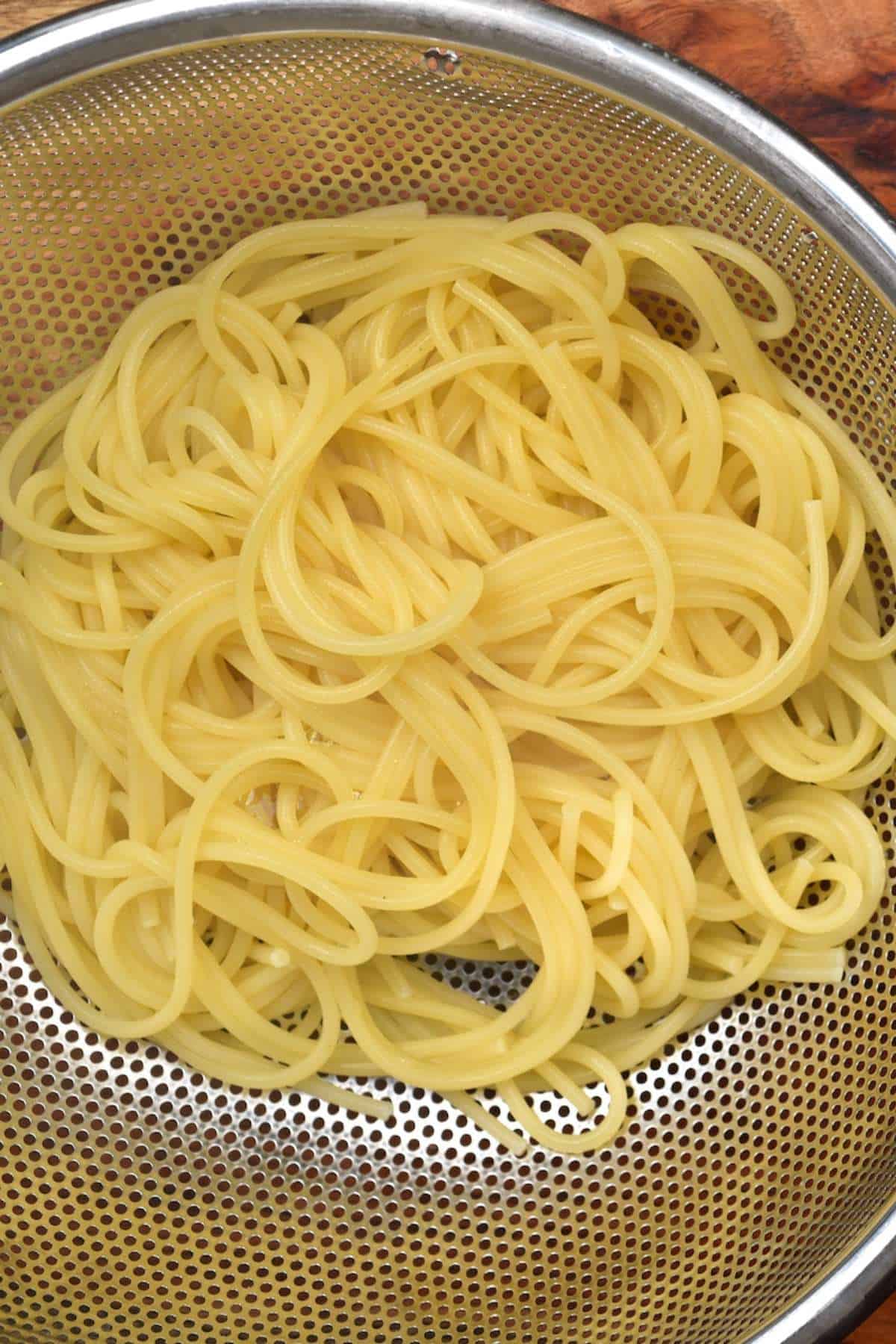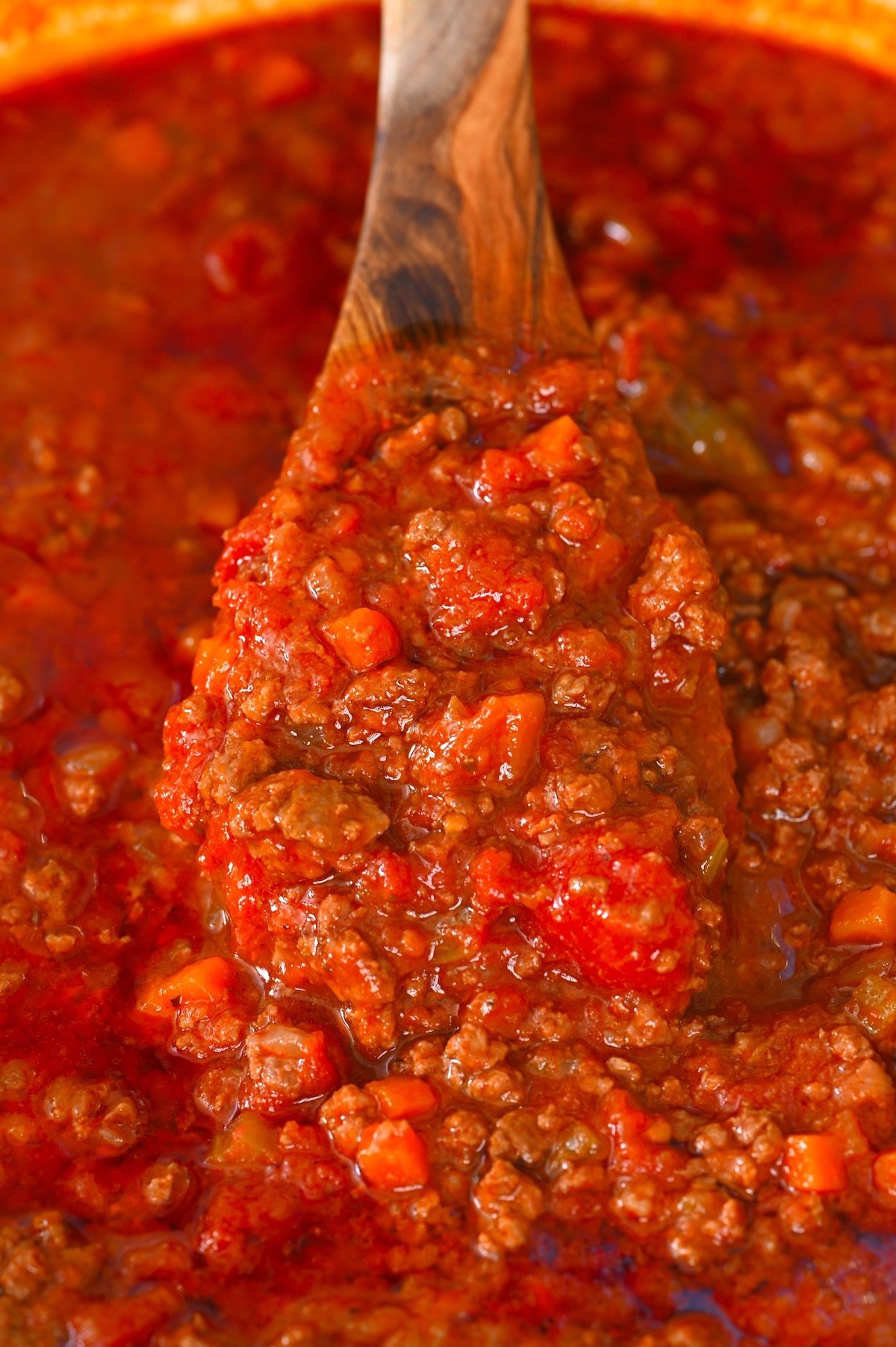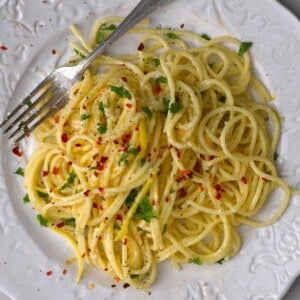It’s a real magic trick to get the perfect amount of pasta right every time, so there are always leftovers when I’m making spaghetti. But did you know how easy it is to store them in the fridge? To make your leftover pasta dinners last even longer, these are my handy tips for storing spaghetti in the fridge so you get delicious leftovers that taste just like fresh.
How long does spaghetti last in the fridge?
Cooked pasta is naturally very moist and, therefore, prone to bacteria growth if not stored properly. Generally, cooked spaghetti will last up to 5 days in the refrigerator – though this also depends on whether other ingredients have been incorporated into the spaghetti. These will influence how long the dish lasts. If your spaghetti is plain, i.e., just cooked in salted water and with nothing added, it can be kept in the fridge for up to five days. The shelf life changes when pasta sauces are involved. If your spaghetti has been mixed with any kind of meat spaghetti sauce, it will keep for 2-3 days. If it has been mixed with any kind of fish or fish sauce, it only has a shelf life of 24 hours, as fish tends to lose its freshness much quicker than other ingredients. For cream- or cheese-based sauces, the shelf life is 4-5 days, while red pepper sauce and other vegetable-based sauces will keep for closer to 2-3. If you’re not sure whether your refrigerated spaghetti noodles are still good to eat, check for these signs of spoilage:
Any signs of obvious bacteria growth (mold, furry areas) Discoloration Unpleasant, sour odor Slimy texture
It’s a common misconception that removing the moldy areas makes the rest of the dish safe to eat. Just because you can’t see visible bacteria doesn’t mean it’s not there, so I recommend discarding all of it.
How to store cooked spaghetti in the fridge
Once you’ve cooked your spaghetti, allow it to reach room temperature before transferring it into an airtight container or heavy-duty freezer bags. This will prevent bacteria from growing as the container warms. Try to get out as much air as possible before storing. If you have a large batch, I recommend separating the spaghetti into multiple portions – this will help them cool down faster. You don’t need to add anything to spaghetti that’s been mixed with sauces, but if you want to refrigerate plain spaghetti, drizzle a little bit of olive oil over the noodles and toss before transferring them into a container. This way, the noodles won’t stick together as they cool. Make sure to label and write the expiration date on the noodles before refrigerating.
How to reheat leftovers
For noodles with extra sauce, transfer the container to a saucepan or pot. Heat on a low temperature, constantly stirring until the spaghetti is warmed through. You may need a little extra water just to thin out the sauce, but you can judge by eye. You can also microwave the spaghetti in 30-second bursts until warmed through. For plain noodles, add the spaghetti to a colander and submerge in boiling water for a minute before enjoying. Leftover spaghetti is perfectly safe to eat cold as well as hot, so reheating is totally optional. If you try storing or freezing pasta, let me know how it goes in the comments below. I’d appreciate a recipe card rating and would love to see your recipe recreations – tag me on Instagram @Alphafoodie!



